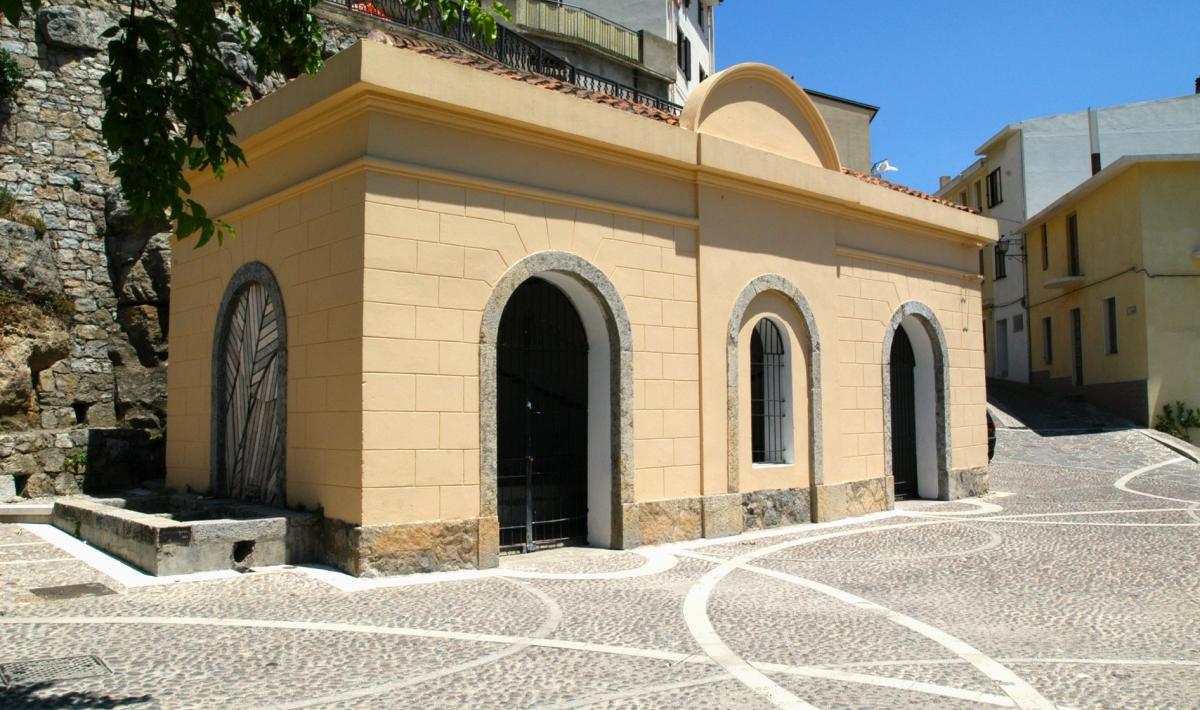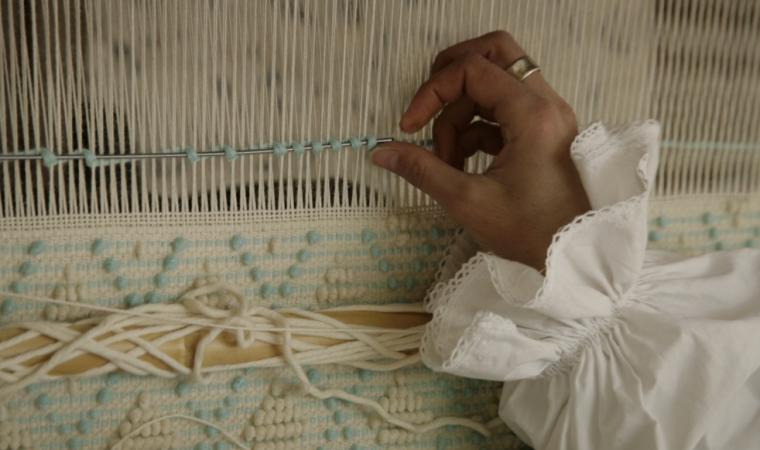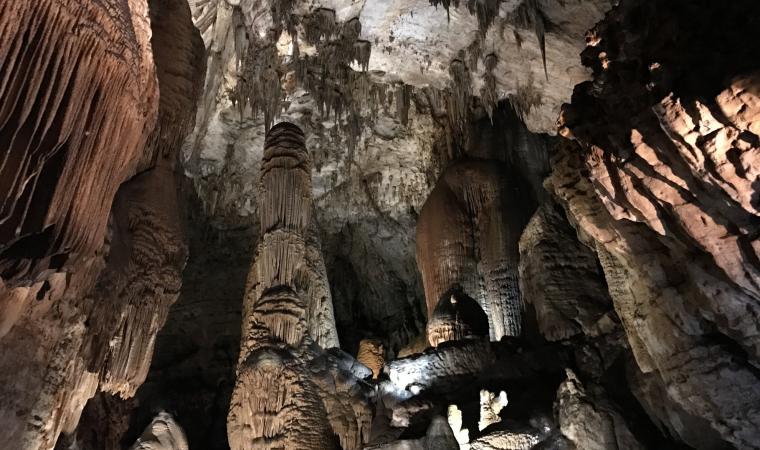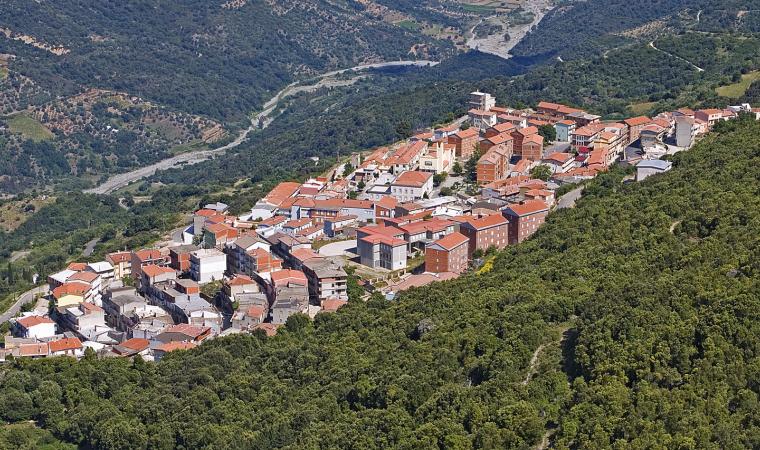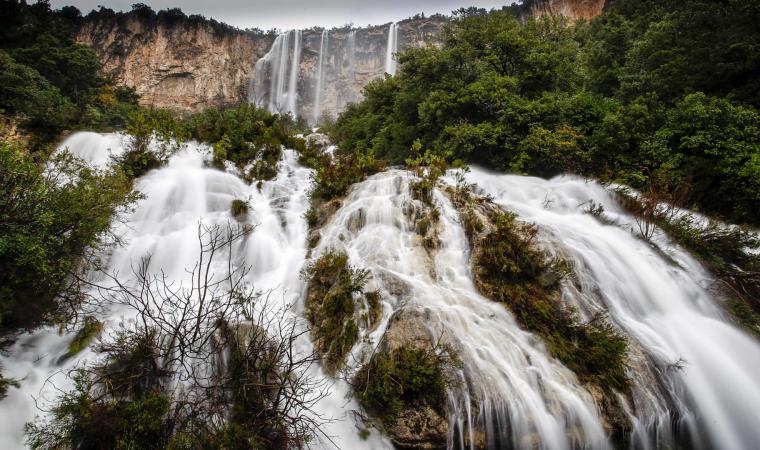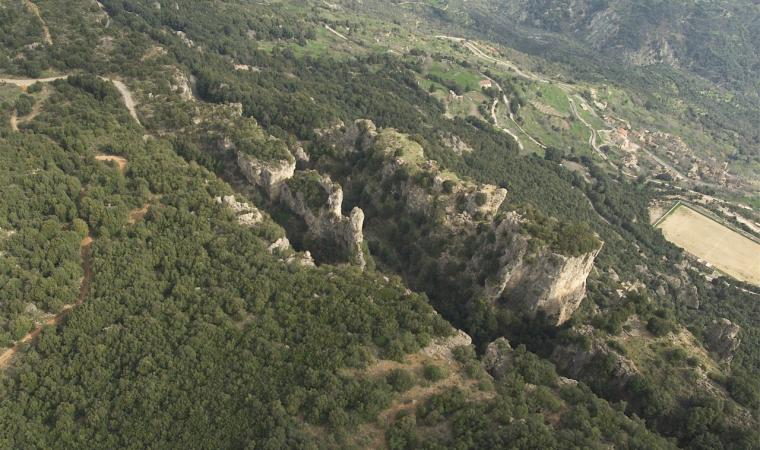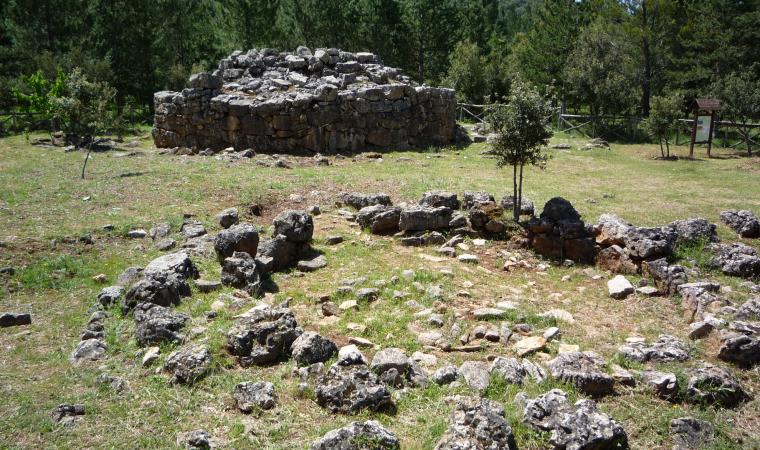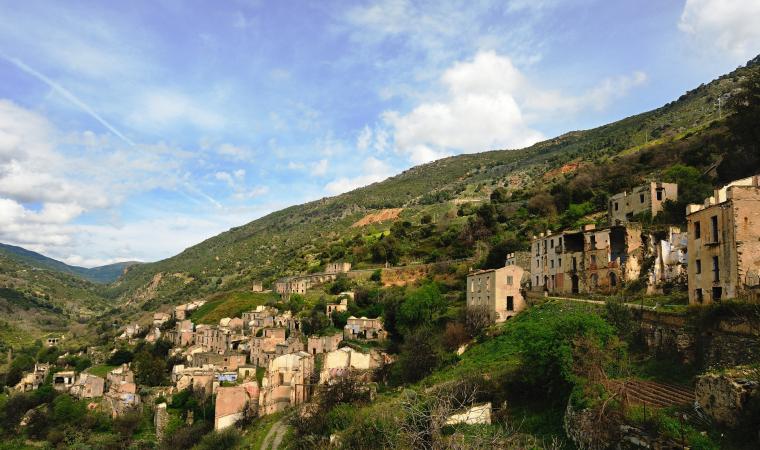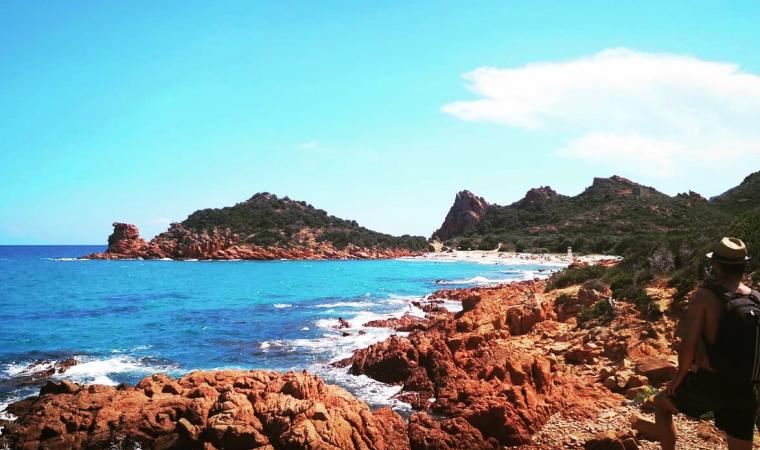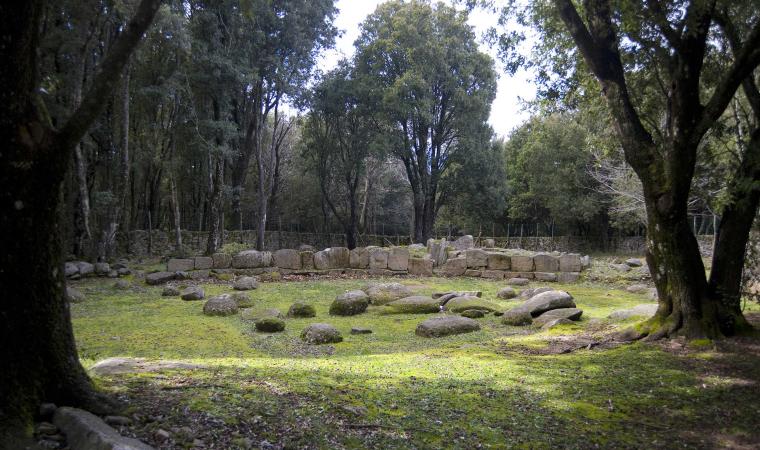The creative flair of great artists, including two of the most important names on the Sardinian cultural scene, made available to transform a place of ‘public utility’ into a work of art. It is no coincidence that the first artist who wanted to bring new life to the Ulassai washhouse was the most illustrious personality born in the village: Maria Lai, in collaboration with her fellow villagers. Later, Costantino Nivola, Guido Strazza and Luigi Veronesi also intervened to transform the old space, used by women to wash wool, into a ‘mini-museum’. Maria Lai’s work dominates the interior of the building: it is a ceiling-mounted frame, created in 1982. A series of ropes are intertwined and tied to iron tubes, forming a traditional frame. At the back, the colours of the ceiling walls stand out – black, grey and red – while in the lateral part, tree trunks were embedded in the wall.
The building, commissioned and built between 1903 and 1905, has a parallelepiped shape and is encircled by a protruding ledge. On the main façade you will see three arched openings - two entrances and a central window -, with granite ledges. Inside, there are two rows of tubs, separated by a low wall. Above, you will notice a series of pipes, over which there are tiles, all made of bronze. The flow of water on the tiles makes an almost ‘musical’, melodic sound. The installation, a 1987 work designed by Costantino Nivola, is called ‘the fountain of sound’. Each short side located outside contains a fountain, framed by an arch. On the west side, there is the ‘fountain of wheat’, a work dated 1989 by Guido Strazza, who is also the creator of the paving in the square. The fountain has a mosaic of white marble and black and white granite tiles as a background, forming lines similar to ears of wheat. Five years earlier, on the opposite side, Luigi Veronesi created the ‘fountain of the spring’: also a mosaic, created with granite tesserae, pink and white marble and sea stones, producing coloured crescent shapes.
The Sa Tappara circular hiking trail starts at the washhouse and is just over two kilometres long and filled with natural and cultural elements. You can admire the Rio Pardu valley, the village of Osini and the eastern coast, passing close to a wildlife protection oasis. To deepen your knowledge of the cultural heritage of Ulassai, which is inextricably linked to Maria Lai, just walk around the village. As well as the Station of Art Museum, created in the former train station, you will also find works and interventions by the famous artist in the Parish Church of Sant’Antioco, in the ‘Casa delle Inquietudini’ (House of Unrest) and in the ‘Scarpata’ (Escarpment), near the cave of Su Marmuri, in the ‘Strada del Rito’ (Road of Ritual) towards the country church of Santa Barbara and at the entrance to the town, where ‘Le Capre Cucite’ (The Sewn Goats) are displayed on a wall.

